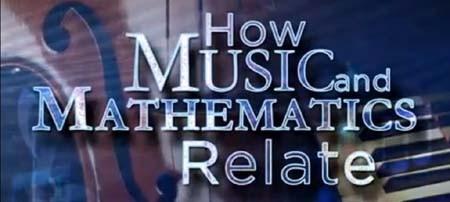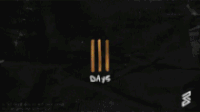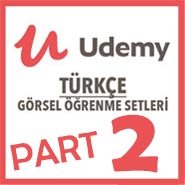
TTC Video How Music and Mathematics Relate TUTORiAL | 3.55GB
Language: English | Genre: eLearning
Gain new perspective on two of the greatest achievements of human culture-music and math-and the fascinating connections that will help you more fully appreciate the intricacies of both.
Great minds have long sought to understand the relationship between music and mathematics. On the surface, they seem very different. Music delights the senses and can express the most profound emotions, while mathematics appeals to the intellect and is the model of pure reasoning.
Yet music and mathematics are connected in fundamental ways. Both involve patterns, structures, and relationships. Both generate ideas of great beauty and elegance. Music is a fertile testing ground for mathematical principles, while mathematics explains the sounds instruments make and how composers put those sounds together. Moreover, the practitioners of both share many qualities, including abstract thinking, creativity, and intense focus.
Understanding the connections between music and mathematics helps you appreciate both, even if you have no special ability in either field-from knowing the mathematics behind tuning an instrument to understanding the features that define your favorite pieces. By exploring the mathematics of music, you also learn why non-Western music sounds so different, gain insight into the technology of modern sound reproduction, and start to hear the world around you in exciting new ways.
Among the insights offered by the study of music and mathematics together are these:
Harmonic series: The very concept of musical harmony comes from mathematics, dating to antiquity and the discovery that notes sounded together on a stringed instrument are most pleasing when the string lengths are simple ratios of each other. Harmonic series show up in many areas of applied mathematics.
"Air on the G String": One of Bach's most-loved pieces was transposed to a single string of the violin-the G string-to give it a more pensive quality. The mathematics of overtones explains why this simple change makes a big difference, even though the intervals between notes remain unchanged.
Auditory illusions: All voices on cell phones should sound female because of the frequency limits of the tiny speakers. But the human brain analyzes the overtone patterns to reconstruct missing information, enabling us to hear frequencies that aren't there. Such auditory illusions are exploited by composers and instrument makers.
Atonal music: Modern concert music is often atonal, deliberately written without a tonal center or key. The composer Arnold Schoenberg used the mathematics of group theory to set up what he called a "pan-tonal" system. Understanding his compositional rules adds a new dimension to the appreciation of this revolutionary music.
In 12 dazzling lectures, How Music and Mathematics Relate gives you a new perspective on two of the greatest achievements of human culture: music and mathematics. At 45 minutes each, these lectures are packed with information and musical examples from Bach, Mozart, and Tchaikovsky to haunting melodies from China, India, and Indonesia. There are lively and surprising insights for everyone, from music lovers to anyone who has ever been intrigued by mathematics. No expertise in either music or higher-level mathematics is required to appreciate this astonishing alliance between art and science.
A Unique Teacher
It is a rare person who has the background to teach both of these subjects. But How Music and Mathematics Relate presents just such an educator: David Kung, Professor of Mathematics at St. Mary's College of Maryland, one of the nation's most prestigious public liberal arts colleges. An award-winning teacher, mathematician, and musician, Professor Kung has studied the violin since age four, and he followed the rigorous track toward a concert career until he had to choose which love-music or mathematics-would become his profession and which his avocation. At St. Mary's College, he combines both, using his violin as a lecture tool to teach a popular course on the mathematical foundations of music. He even has students invent new musical instruments based on mathematical principles.
In How Music and Mathematics Relate, you see and hear some of these ingenious creations, which shed light on the nature of all sound-producing devices. Across all 12 lectures Professor Kung plays the violin with delightful verve to bring many of his points vividly to life.
Uncover Musical Structure Using Math
You will discover how mathematics informs every step of the process of making music, from the frequencies produced by plucking a string or blowing through a tube, to the scales, harmonies, and melodies that are the building blocks of musical compositions. You even learn what goes on in your brain as it interprets the sounds you hear. Among the fascinating connections you'll make between music and mathematics are these:
Woodwind mystery: Why can a clarinet produce sounds much lower than a flute? Both are vibrating tubes of similar length. A student-designed instrument called the Wonder Pipe 4000 demonstrates how mathematics predicts this phenomenon.
Why is a piano never in tune? Elementary number theory explains the impossibility of having all the intervals on a piano in tune. Study the clever solutions that mathematicians, composers, and piano tuners have devised for getting as close as possible to perfect tuning.
Timbre: Nothing is more distinctive than the "twang" of a plucked banjo string. But take off the initial phase of the sound-the "attack"-and a banjo sounds like a piano. Analyze different sound spectra to learn what gives instruments their characteristic sound or timbre.
Using fractions to show off: Professor Kung plays a passage from Mendelssohn's Violin Concerto to demonstrate a common trick of showmanship for string players. The technique involves knowing how to get the same note with different fractional lengths of the same string.
And you'll hear how one of the greatest philosophers and mathematicians of all time described the connection between music and mathematics. "Music is a secret exercise in arithmetic of the soul, unaware of its act of counting," wrote Gottfried Wilhelm Leibniz, co-inventor of calculus with Isaac Newton. What Leibniz means, says Professor Kung, is that music uses many different mathematical structures, but those structures are hidden. With How Music and Mathematics Relate, you'll see these hidden connections come to light.
Lectures
1 Overtones-Symphony in a Single Note
2 Timbre-Why Each Instrument Sounds Different
3 Pitch and Auditory Illusions
4 How Scales Are Constructed
5 How Scale Tunings and Composition Coevolved
6 Dissonance and Piano Tuning
7 Rhythm-From Numbers to Patterns
8 Transformations and Symmetry
9 Self-Reference from Bach to G?del
10 Composing with Math-Classical to Avant-Garde
11 The Digital Delivery of Music
12 Math, Music, and the Mind
Uloaded.net = High Speeds
http://uploaded.net/file/vjbcp9xv/TTC.Video.How.Music.and.Mathematics.Relate.TUTORiAL-iND.part1.rar
http://uploaded.net/file/8gquggz3/TTC.Video.How.Music.and.Mathematics.Relate.TUTORiAL-iND.part2.rar
http://uploaded.net/file/k1e4cd4j/TTC.Video.How.Music.and.Mathematics.Relate.TUTORiAL-iND.part3.rar
http://uploaded.net/file/xwlurbtu/TTC.Video.How.Music.and.Mathematics.Relate.TUTORiAL-iND.part4.rar
Rapidgator.net
http://rapidgator.net/file/78934097/TTC.Video.How.Music.and.Mathematics.Relate.TUTORiAL-iND.part1.rar.html
http://rapidgator.net/file/78934099/TTC.Video.How.Music.and.Mathematics.Relate.TUTORiAL-iND.part2.rar.html
http://rapidgator.net/file/78934098/TTC.Video.How.Music.and.Mathematics.Relate.TUTORiAL-iND.part3.rar.html
http://rapidgator.net/file/78934001/TTC.Video.How.Music.and.Mathematics.Relate.TUTORiAL-iND.part4.rar.html
TO MAC USERS: If RAR password doesn't work, use this archive program:
RAR Expander 0.8.5 Beta 4 and extract password protected files without error.
TO WIN USERS: If RAR password doesn't work, use this archive program:
Latest Winrar and extract password protected files without error.































